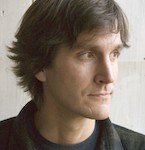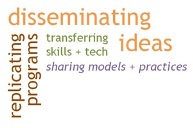
Joanna Chin
Wrapping up the Arts & Military Blog Salon
Posted by May 17, 2013

Joanna Chin
Throughout this week the overriding question has been: why do we use the arts in this complex space where individual and community health, veterans, and the military intersect?
On day 1, the resounding answer was that the arts promote the health and wellness of our veterans and active duty members. Two experts in the creative arts therapy field, NICoE Healing Arts Program Coordinator Melissa Walker and Semper Sound Military Program Director Rebecca Vaudreuil, made science-based arguments for the place of art-making and music in opening up channels of communication and guiding service members down the path towards healing. Susan Rockefeller’s experience documenting Nell Bryden’s band as they played for troops serving in Iraq gave anecdotal evidence of the impact that music can have on those thousands of miles from home.
As part of a natural progression from individual health to community wellbeing, on day 2, bloggers spoke to the power of the arts to aid in community reintegration. Punctuated by beautiful writing from the Veterans Writing Project, blog posts by Combat Paper Project founder Drew Cameron and Executive Director of Maryland Citizens for the Arts John Schratwieser asserted the need for everyone and particularly, artists/arts administrators as bedrocks of their community, to engage in the work of re-connecting veterans to home.
Looking at the intersection of the arts and the military from a global perspective, day 3 explored how culture plays a significant role in the success of missions and military communities abroad. From David Diamond’s observations of theater on military bases to two posts by General Nolen Bivens and American University Professor Dr. Robert Albro, we saw a shared acknowledgment of art and culture’s importance to the military (both in protecting cultural assets and, also, as a tool for creating and maintaining social and political stability), as well as diverse viewpoints on the challenges associated with this work.
Read More





























 Bill O'Brien
Bill O'Brien
 Examples of scaling.
Examples of scaling.














